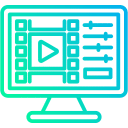Understanding Onboarding Training Software
In today’s dynamic and competitive business environment, effective onboarding training software has become essential for organizational success. These digital tools are designed to streamline the process of integrating new employees, offering scalable, interactive, and customizable solutions that traditional methods often lack. Unlike paper-based or face-to-face approaches, onboarding software provides a more efficient way to facilitate a smooth transition for newcomers into the company’s culture and workflows.
Beyond simple orientation, onboarding training software serves as a strategic asset that ensures new hires quickly acquire vital knowledge, skills, and cultural understanding necessary for their roles. Typically, these systems include modules covering company policies, role-specific training, compliance, and cultural integration—all accessible through user-friendly interfaces. Automating administrative tasks like progress tracking and certification reduces onboarding time and minimizes errors, consequently boosting productivity.
Importantly, onboarding software has transformed organizational approaches to employee integration by promoting consistency, engagement, and ongoing learning. Organizations benefit from centralized knowledge bases, personalized learning experiences, and data analytics insights. This fosters a more inclusive, efficient onboarding process that enhances retention and accelerates new employee contribution. In an era dominated by remote work and digital transformation, leveraging robust onboarding platforms is vital for maintaining a competitive edge and achieving operational excellence.
What Is Onboarding Training Software? Key Features and Benefits
Onboarding training software has become an indispensable tool for organizations seeking to optimize their new employee integration process. By harnessing advanced technology, this software simplifies onboarding, ensures consistency, and accelerates the transfer of essential knowledge. This overview highlights its core features, including automation, personalized learning paths, and progress tracking, alongside the significant benefits for HR teams, new hires, and overall organizational growth.
Core Features of Onboarding Training Software
Automation of Onboarding Processes
Automation is a key feature that handles repetitive tasks such as distributing onboarding documents, scheduling training sessions, and sending reminders. Studies indicate that automation can reduce administrative burdens by up to 70%, freeing HR professionals to focus on strategic initiatives like talent development. Automated onboarding ensures a consistent, timely, and engaging experience for all new employees.
Personalized Learning Paths
Effective onboarding relies heavily on personalization. Onboarding software allows organizations to customize learning paths based on roles, experience levels, and individual preferences. Adaptive learning technologies assess a new hire’s existing knowledge and tailor content delivery accordingly. This targeted approach accelerates competence development, fosters faster team integration, and improves overall job performance.
Progress Tracking and Analytics
Monitoring progress is essential for successful onboarding. The software provides real-time dashboards displaying completion statuses, engagement levels, and assessment results. These insights enable HR managers to intervene proactively, supporting learners who may need additional assistance. Data analytics also help organizations evaluate onboarding effectiveness, leading to iterative improvements and increased retention rates.
Benefits of Onboarding Training Software
Enhanced Efficiency for HR Teams
Automating routine tasks streamlines HR operations, shortens onboarding cycles, and reduces errors. HR professionals can devote more time to strategic activities like talent development and engagement initiatives. Additionally, standardized processes ensure compliance with legal and organizational policies, minimizing risk.
Improved New Hire Experience and Engagement
Personalized onboarding fosters a welcoming environment that demonstrates an organization’s investment in employee success. Interactive modules, multimedia resources, and self-paced learning increase engagement levels. Higher engagement correlates with greater retention and quicker productivity ramp-up.
Organizational Growth and Productivity
Great onboarding software directly enhances organizational performance by reducing time-to-productivity and ensuring alignment with company culture and goals. Well-integrated onboarding allows new hires to quickly adapt, leading to increased organizational agility and a stronger competitive advantage.
How Does Onboarding Training Software Work? A Step-by-Step Breakdown
Onboarding software has revolutionized how organizations introduce new hires to their roles and culture. It automates key workflows, making onboarding more engaging, efficient, and consistent. Here’s a detailed step-by-step guide to its operation — from content creation to integration with other HR tools.
1. Content Creation and Management
The process begins with developing tailored training materials aligned with organizational goals. HR teams, L&D professionals, or subject matter experts use intuitive content management tools to create modules, including videos, quizzes, PDFs, and e-learning courses. Authoring tools support multimedia integration, assessments, and compliance documents, ensuring content is engaging and role-specific. Existing content can also be uploaded or customized based on department, role, or location.
2. Deployment and Access
Once finalized, content is deployed via secure portals accessible on web or mobile devices. New hires receive login credentials, and automated systems assign relevant modules based on their role or progress. Options for self-paced learning or scheduled sessions are available, with reminders and progress updates keeping learners engaged and on track.
3. Monitoring and Progress Tracking
Real-time dashboards enable HR teams to monitor completion status, engagement metrics, and areas of difficulty. Alerts notify managers if a new hire falls behind, allowing for timely support and intervention. This proactive approach enhances onboarding effectiveness and learner success.
4. Assessments and Certification
To reinforce learning, onboarding software includes quizzes, practical exercises, or simulations. Successful assessments lead to certifications or badges, confirming employee readiness. These records serve as proof of compliance and motivate learners during their onboarding journey.
5. Integration with HR and Other Systems
Effective onboarding tools seamlessly connect with HR systems such as applicant tracking, HRIS, payroll, and performance platforms. This ensures data consistency, reduces manual entry, and automates workflows like benefits enrollment and documentation. Integration streamlines administrative tasks, enhancing the overall experience for new hires and HR teams alike.
6. Feedback and Continuous Improvement
Post-onboarding feedback collections help organizations refine content and delivery. Insights from surveys enable continuous improvement of onboarding processes. Additionally, many platforms support ongoing training and development beyond initial onboarding, fostering engagement and retention over the long term.
🚀 Ready to See Paradiso LMS in Action?
Let’s show you how Paradiso LMS can work for you.
Trends and Innovations in Onboarding Training Software
The field of onboarding training software is rapidly evolving, driven by technological innovations and shifting organizational priorities. New features emphasize personalization, accessibility, and data-driven insights to enhance the onboarding experience. Here are some key trends shaping the future of onboarding technology.
Mobile Learning: Accessibility and Flexibility
Mobile-first approaches allow new hires to access training from anywhere, at any time. With over 70% of employees preferring mobile learning, platforms optimize for smartphones and tablets, supporting microlearning and on-the-go engagement. This flexibility accommodates remote workers and diverse schedules, boosting retention and participation.
Gamification: Boosting Engagement
Integrating game elements like badges, leaderboards, and quizzes makes onboarding interactive and motivating. Studies show gamified training increases completion rates by 60% and enhances satisfaction. Gamification creates a sense of achievement, encouraging active participation and fostering a positive learning environment.
AI Personalization: Customized Learning Journeys
Artificial intelligence tailors onboarding experiences to individual learners based on prior knowledge, learning pace, and preferences. This results in faster onboarding times—up to 50% quicker—and higher learner satisfaction. AI-driven platforms can recommend targeted modules, identify knowledge gaps, and adapt content dynamically for maximum effectiveness.
Analytics: Data-Driven Decision Making
Embedding analytics helps organizations track engagement, completion rates, and assessment outcomes. This data offers insights to improve onboarding strategies, reduce ramp-up time by up to 25%, and predict future challenges. Advanced analytics support continuous refinement and better alignment with organizational goals.
Future Developments in Onboarding Technology
- AR and VR: Immersive experiences like virtual workplace tours and simulation training enhance practical learning.
- HR Ecosystem Integration: Seamless connection with broader HR systems enables holistic onboarding workflows.
- Voice-Enabled Learning: AI-powered voice assistants provide real-time answers and support hands-free learning during onboarding.
- Blockchain Credentialing: Secure, verifiable records of certifications simplify compliance and record-keeping.
By embracing these innovations, organizations can deliver more personalized, engaging, and efficient onboarding processes, ensuring new hires are well-integrated and productive from the start. Platforms like Paradiso LMS incorporate many of these advancements, helping organizations stay ahead in a rapidly evolving digital landscape.
Why Choose Paradiso LMS for Onboarding Training
Selecting the right onboarding platform is crucial for seamless integration of new employees. Paradiso LMS offers a comprehensive suite of features designed to enhance onboarding experiences while simplifying administrative workflows, making it an ideal choice for organizations aiming for excellence.
Customized Onboarding Experiences
Paradiso LMS enables the creation of personalized onboarding pathways tailored to roles, departments, or locations. With customizable modules, multimedia content, and interactive assessments, new hires receive relevant information efficiently. This personalization accelerates understanding and fosters a sense of belonging from day one.
Automation for Efficiency
The platform’s automation capabilities streamline onboarding workflows—scheduling tasks, reminders, and certifications automatically. For instance, mandatory compliance courses or IT setup instructions are assigned and tracked without manual intervention, reducing administrative workload and minimizing errors.
Seamless Integration Capabilities
Paradiso LMS seamlessly integrates with HR systems like applicant tracking and payroll, creating a unified onboarding ecosystem. These connections facilitate automatic data transfer, real-time updates, and cohesive tracking, thereby enhancing overall onboarding quality and consistency.
Data-Driven Insights and Progress Tracking
Robust analytics provide detailed insights into learner engagement, progress, and comprehension levels. HR teams can identify bottlenecks, evaluate training impact, and adapt programs accordingly. Continuous improvement is supported through these data-driven insights, aligning onboarding with organizational objectives.
Success Stories Demonstrating Effectiveness
Many organizations have reported significant improvements after adopting Paradiso LMS. For example, a leading tech company reduced ramp-up time by 30% and increased satisfaction scores through tailored and automated onboarding journeys. These success stories underscore Paradiso LMS’s effectiveness in enhancing onboarding outcomes and employee engagement.
Conclusion and Actionable Takeaways
Implementing effective onboarding training software is key to integrating new employees smoothly, ensuring they understand policies, and developing necessary skills. A successful onboarding platform should be user-friendly, customizable, scalable, and equipped with robust tracking features. When choosing such a system, consider your organization’s specific needs, ease of use, system integrations, and support services.
Test platforms through demos and trial periods to ensure they meet your training goals and deliver a positive user experience. Prioritize features like personalized learning paths and interactive content to boost engagement and retention. Regularly update onboarding materials to reflect current policies and practices, keeping new hires motivated from day one.
Investing in a proven onboarding training solution demonstrates your commitment to employee success and long-term organizational growth. Platforms like Paradiso LMS deliver advanced features that streamline workflows and elevate onboarding experiences. Take action today—explore how Paradiso LMS can transform your onboarding strategies and accelerate new hire productivity.












